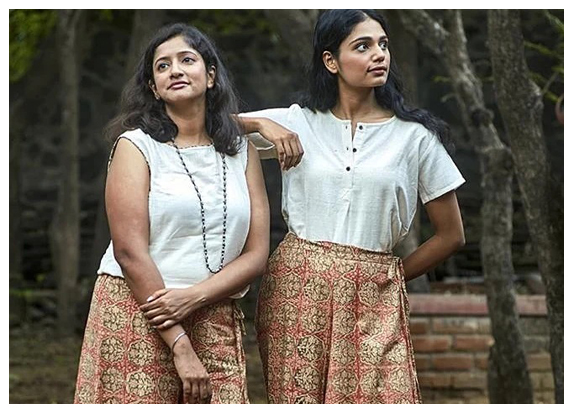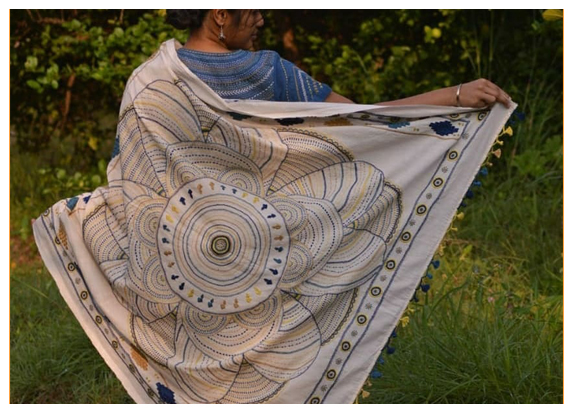Handspun and Handwoven fabric (Khadi) using natural fibres are comfortable to wear, since the low-twisted yarn allows to breathe and absorb moisture and it becomes softer with every wash. It generates income for the rural poor, while reminding the country of its legacy of sustainable living and self-reliance.

In rural India, hand-spinning supplements agricultural income. Every village will have a family of weavers and women who supported with pre- and post-loom activities.
The uniqueness of the fabric continues to be relevant even in present times. Gandhi choose Khadder – which he name ‘khadi’ as a symbol of Indias Independence. It can revive local economy and bring to Indian consciousness, the issues of livelihood rights. When Gandhi revived Khadi, it rescued them from abject poverty. Gandhi revived Khadi and made it the symbol of Swadeshi movement.
In 1925 the All India Spinning Association was set. The techniques of Carding, Spinning, Weaving, Dyeing and Printing were improved and new varieties of Khadi were introduced in the market. 1933 saw a production of 9,150,000 metres of Khadi cloth creating employment for over 200,000 people.
For khadi to become sustainable the products developed should be commercially viable. Both production and Sales need to form a smooth cycle.
Pre and Post Independence many followers of Ghandhian principles wore Khadi. Apart from Politicians, Government consumed more than 30 % of Khadi produced for its employees, Police and Armed Forces. Later when Polyvastra was introduced (Cotton mixed with Synthetic Polyester Fibre), several Khadi units closed down after decline of bulk orders.
Conscious consumers globally have created a demand for ethically created organic cotton fabrics dyed using natural ingredients. This will benefit the entire supply chain from Farmers to Spinners, Dyers and Weavers. But work the amount of work is not sustained yet. For this to become completely sustainable production to consumption has to become local.
Supply Vs Demand
Today Ambar Charka is used for spinning, where the production and quality of the yarn has substantially improved. In 2002, Khadi production was less than half percent of India’s textile production. Though conscious consumerism awareness is rising among people, availability of sustainable clothing needs more focus. Many a times Handloom gets a token gesture for labeling while many a process are mechanized, with a repercussion of loss of jobs in the Khadi Industry. Khadi also has to compete with the wrinkle-free, Mill-made; Blended Fabrics. The spirit of Khadi needs a revival again.
The weavers will have to evolve with the changing times in terms of design for the fluctuating demands from the fashion driven markets, which demands something new every season. There has been negligible investment in terms of design and product development.

This would change if more people adopt sustainable clothing and support handloom, which will give a big boost for the artisans.